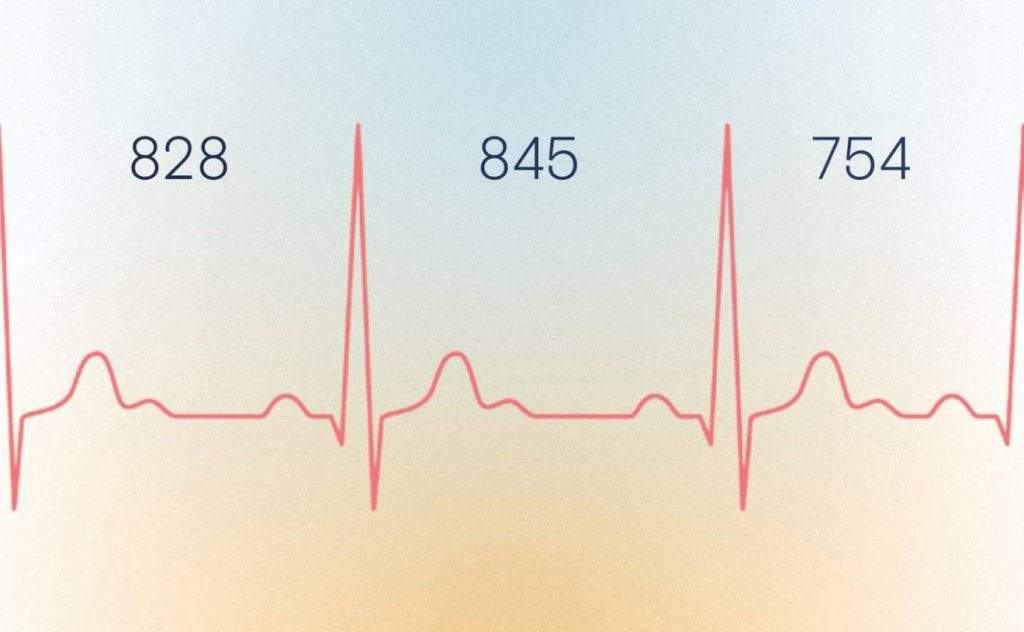
The concept of Heart Rate Variability (HRV) is seeing increased popularity in clinical use as a measurement for overall health. Although the methodology might sound confusing at first glance. HRV measurements can give insight into whether people are healthy individuals or not. Delving into this topic further reveals a complex measure of a person’s health as defined by heartbeat intervals.
How is Heart Rate Variability Defined?
HRV analysis is the study of the intervals between heartbeats. Specifically, this measure uses the RMSSD, the root means square of the successive differences in beat times. Sometimes, the intervals between heartbeats are longer and sometimes they are shorter; they are not supposed to be at the same frequency. These changes can occur when someone is feeling stressed
Someone with a low HRV has heartbeats that do not vary in their intervals while someone with a high HRV has more variance in their intervals. The measurement between successive heartbeats is called an RR interval. These interbeat intervals are measured in milliseconds and gathered from a resting heart rate or during physical activity. Often, these measurements will be divided into frequency domains to divide the HRV into standard deviations and then track whether someone has high-frequency or low-frequency occurrences of heartbeats as well as to compare time periods of higher HRV and lower HRV.
What Causes Changes in HRV?
The autonomic nervous system, including the sympathetic nervous system and parasympathetic nervous system, plays a large role in regulating a person’s HRV. Thus, they are responsible for the changes in a person’s electrophysiology.
Still, there are other elements at play; these systems don’t change the heart rate variability for no good reason. Often, when healthy people are in a resting state, their HRV will vary quite a bit. That is completely normal and healthy parasympathetic activity.
Heart Rate Variability does have some correlation with changes in blood pressure, though it does so in conjunction with elements such as the presence of stress hormones. An analysis of Heart Rate Variability will show differences for people that have been in a fight-or-flight situation, something that is impacted by the Sympathetic Nervous System.
An increased heart rate, mental stress, and short-term physical danger can all impact the HRV data gathered from a person. The vagus nerve also has an impact on this autonomic function, as it adjusts the heart rate based on things that happen to the body.
Other key indicators of heart health as they pertain to HRV include the HF ratio, SDNN, NN intervals, and other forms of time domain measures.
To answer the original question, there is a lot that can cause changes to the well-being of a person, and those changes often impact the Heart Rate Variability.
How Does Heart Rate Variability Impact Health?
According to the task force of the European Society of Cardiology, HRV can give multiple insights into the overall health of a person. Healthy subjects can check to see if they have this valuable measure of a healthy heart. It is done by checking if their heart rate variability fluctuates in a proper manner. After all, a healthy heart Specifically can be used as a prediction tool for sudden heart attacks and cardiac death. Along with other forms of heart failure that cause mortality to rise. People that have a reduced HRV are more likely to present with a form of heart disease compared with those who have a higher level of variability.
In fact, low HRV can be used as a predictor of congestive heart failure as well as acute myocardial infarction, a long-term and short-term disease, respectively. The only thing that remains is to learn how to measure and control HRV. It’s not as though one can Google this, after all.
How Can You Measure and Control Your HRV?
While an electrocardiogram (ECG) is a great tool for measuring the health of the cardiovascular system. It was not designed to look for HRV the same way that modern tools have been.
Wearables seem to be the key to measuring your HRV. Since, it is directly pressed against your skin. It provides term recordings and numerical standards of measurement for easy access to one’s HRV.
That way, a person that uses a wearable and notices changes in this measurement can look into behavioral modification to lower their HRV over time. The North American Society of Pacing insists that people should not focus solely on this measurement of a physiological interpretation of the heart’s health. A holistic look at one’s heart rate, HRV, and risk factors are necessary to determine one’s risk. Even then the risk stratification varies with genetics and other personal issues.
A person’s heart rate variability uses time-domain analysis to determine whether someone has healthy variances in their heartbeat. It’s becoming a useful diagnostic tool. But, unlocking the total power of understanding surrounding this measure requires more specialized tools than a simple ECG. Wearables are the future of measuring and managing these occurrences. These could lead to positive results for the wearer!